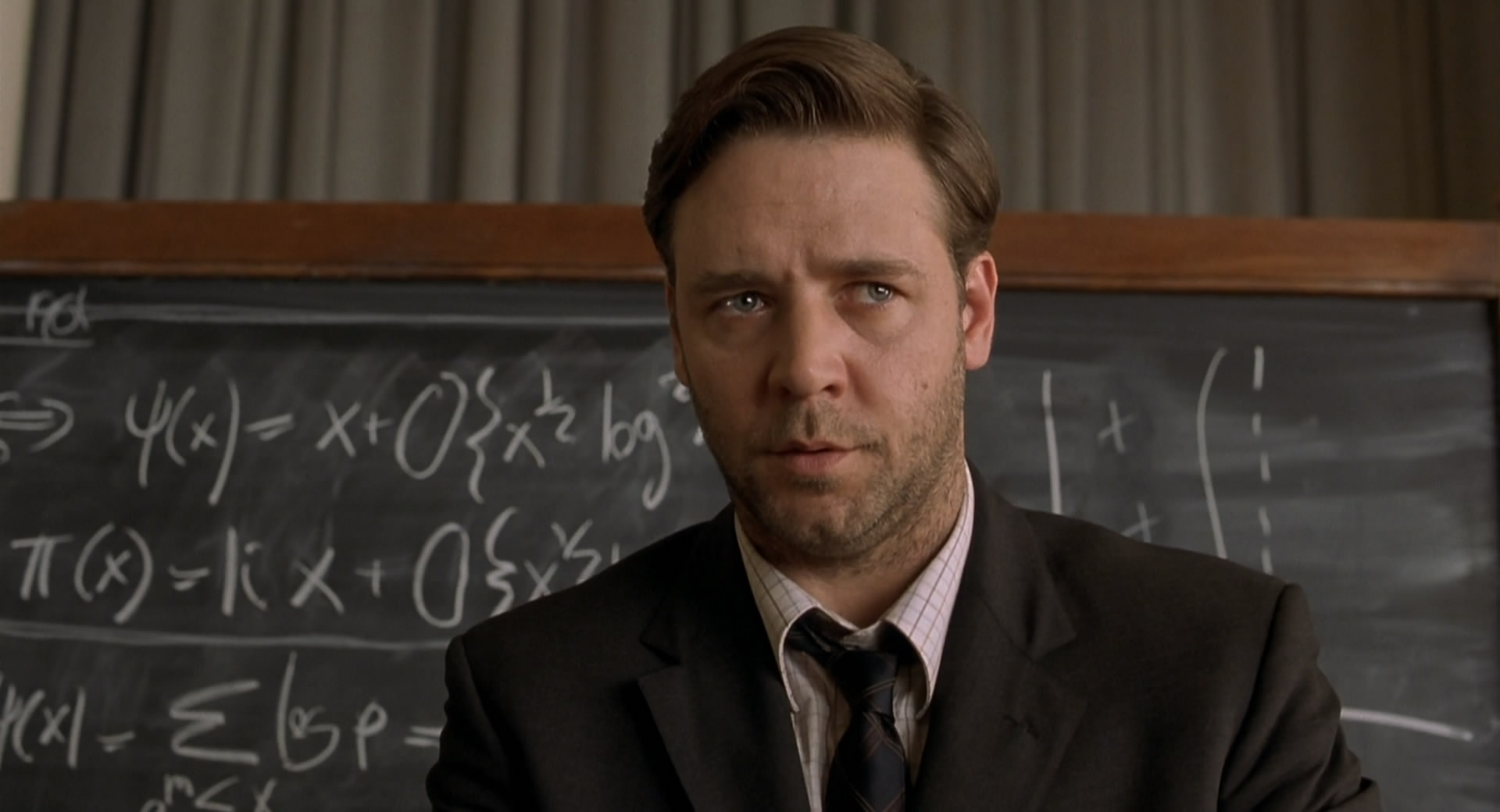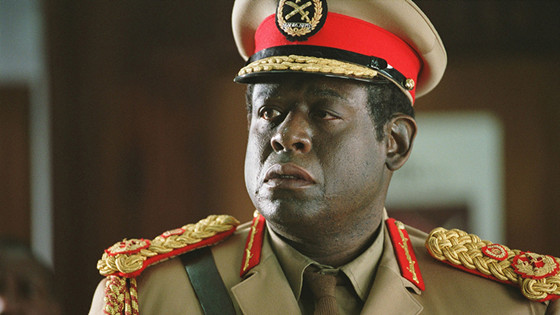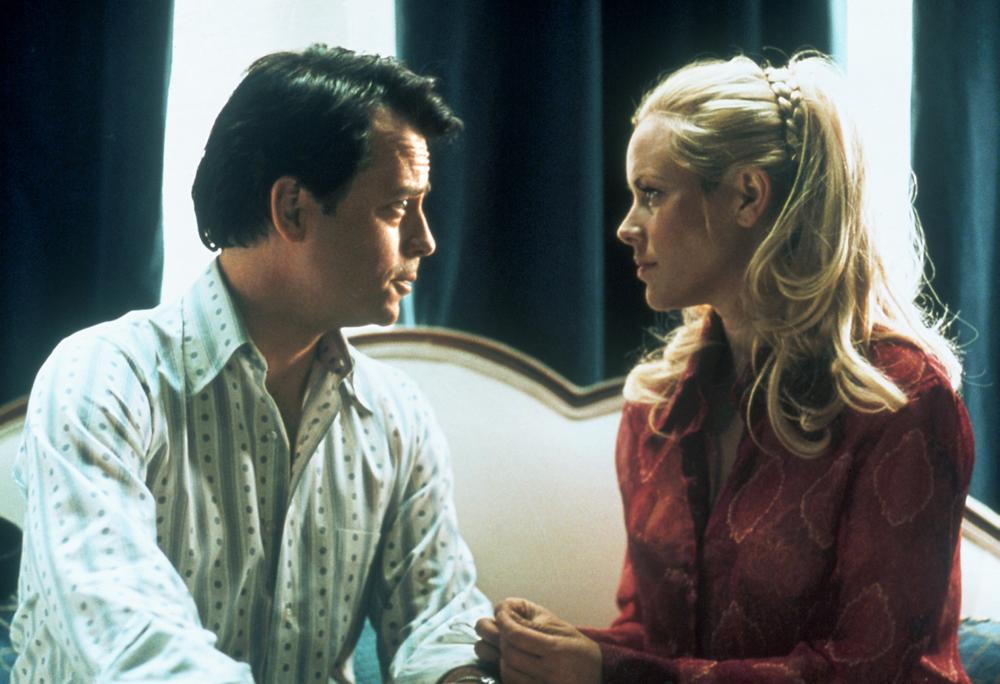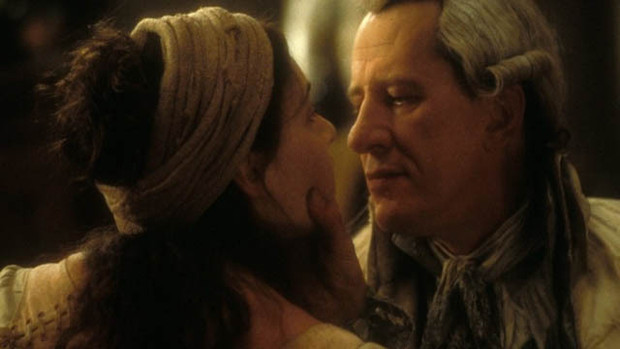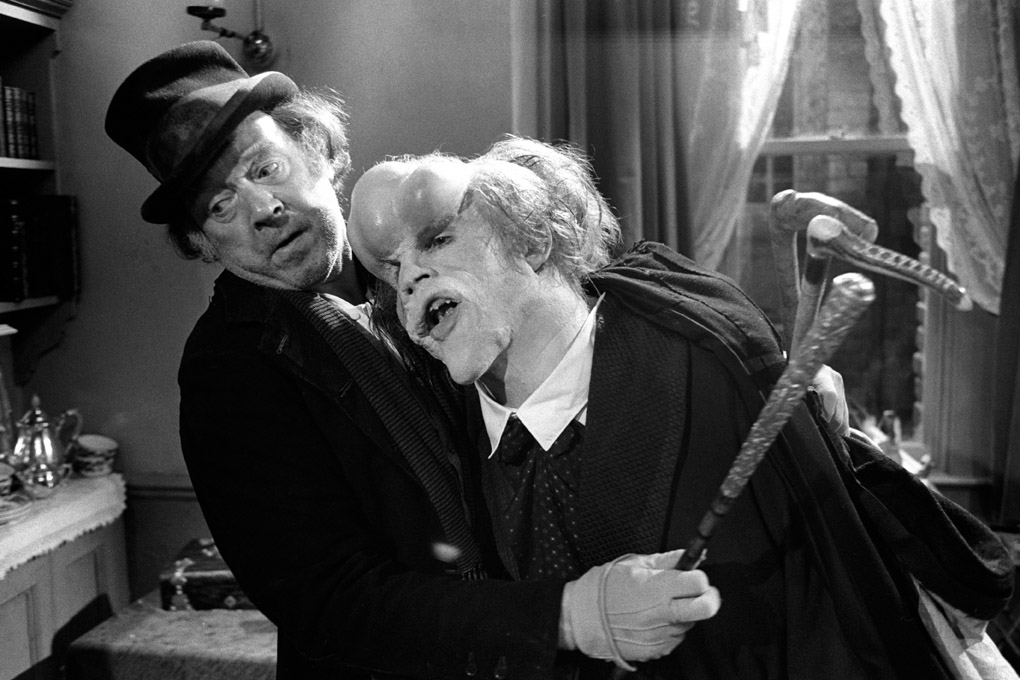Biopics, or biographical pictures, are a sub-genre of dramas, and have existed since at least the turn of the twentieth century with Georges Melies’ feature-length epic Jeanne D’Arc (1899), continuing with a spate of films during the Great Depression, with Paul Muni starring in several, including Muni featured as an Al Capone-like gangster in Scarface: The Shame of a Nation (1932).
It probably goes without saying that the purpose of any biopic is to, inter alia, highlight some controversy. However, sometimes the films generate controversy beyond their subject matter, either because of the choice of person, the way the film was produced, or the story written. Not least among the controversial issues is the dedication of the film to actual historical events, or lack thereof, whether intended or not.
1. Last King of Scotland (2006)
This film is based on the book by the same name, written by Giles Foden. The film tells the fictional story of Nicholas Garrigan, played by James McAvoy, a young Scottish doctor who travels to Uganda and becomes the personal physician to president Idi Amin (Dada), played by Forest Whitaker. The story takes place during brutal dictatorship of Amin, who ruled Uganda from 1971 to 1979. We enter the story just as Amin has overthrown the incumbent president Milton Obote in a coup d’état.
The screenplay was adapted by Peter Morgan, also known for Frost/Nixon (2008) (A dramatic retelling of the post-Watergate television interviews between British talk-show host David Frost and former president Richard Nixon) and Rush (2013) (The merciless 1970s rivalry between Formula One rivals James Hunt and Niki Lauda).
In those two films, Morgan took liberal dramatic license with the script (e.g., exaggerating the Hunt-Lauda rivalry in Rush), creating numerous factual inaccuracies – a constant criticism of many biopics, especially those that garner much attention.
Remaining largely true to the novel, Morgan chose not to embellish Last King of Scotland with many historical details beyond the initial coup that brought Amin to power as well as the expulsions of anyone of Asian (largely Indian) descent. The end of the film displays the commonly displayed statistics of Amin’s brutality, including his slaughter of 300,000 Ugandans during his eight-year madness.
But, the purpose of the film was not to present a documentary of Amin’s dictatorship – there are a slew of documentaries that serve that purpose. Instead, the film was a showcase for the acting ability of McAvoy and, especially, Whitaker, who won an Oscar for his powerful portrayal of the dictator’s descent into paranoia.
Of course, comparisons can be made with the 1981 biopic, Amin: The Rise and Fall, directed by Sharad Patel and staring Kenyan actor Joseph Olita as Amin. The film won five awards, including best actor for Joseph Olita, at the Las Vegas International Film Festival (Olita believed he was snubbed for an Oscar nomination, and has since claimed that his performance was far superior to that of Whitaker).
Patel’s film is not an adaptation of a fictional story taking place during historical events, but documents the historical events themselves, ending with the Tanzanian invasion in 1978 that, with the assistance of Ugandan rebels, led to the toppling of Amin in 1979 and his fleeing the country. Indeed, Patel’s film includes what many believe is Foden’s derivation for Dr. Garrigan, which was Bob Astles, a white former British soldier who became one of Amin’s closest advisers.
But what makes Last King of Scotland important, and controversial, is the questions it raised. The film was shot largely in Uganda in 2006, which meant the people of Uganda were confronted with their history – people who were alive during Amin’s reign, and the younger generation who only “know” him from what they have read.
How did Ugandans react to the interpretation of their history? How does the view of Idi Amin differ from that in the West? The phenomenon is not completely unlike what has been happening in Russia, as talk of regeneration of the cult of Stalin grows louder.
2. Auto Focus (2002)
Auto Focus takes a look at the life and bizarre death of Bob Crane, one of the biggest stars of 1960s television. Crane played the wise guy Colonel Robert Hogan in the late 1960s television comedy, Hogan’s Heroes.
During filming of the series Hogan’s Heroes, Crane began a friendship with John Carpenter, a video recording techie and social leach. Crane developed what, during that era, was considered a bizarre sexual lifestyle, while married. He and Carpenter would film their sexual encounters with a long stream of women over the course of several years. In 1978 Bob Crane was beaten to death with a camera tripod in Arizona while starring in a dinner theater play.
Carpenter was the prime suspect. It would be 14 years before Carpenter would be brought to trial, only to be acquitted – not, many would say, because Carpenter was innocent, but because of the negligent manner in which the crime was investigated and prosecuted (see the documentary, Murder in Scottsdale : The Death of Bob Crane (2003)). Dead men tell no tales. John Carpenter died on September 4, 1998, four years after he was acquitted.
The movie is based on the book, The Murder Of Bob Crane: Who Killed the Star of Hogan’s Heroes? written by Robert Graysmith, a true crime author who is best known for his works on the Zodiac Killer case.
The movie’s director, Paul Schrader, had familiarity with such stories, having written the screenplay for Taxi Driver and written and directed American Gigolo. The film is also well cast, with Greg Kinnear brilliantly portraying Crane’s blissful ignorance of his perversion, often referring to himself as “normal”, and Willem Defoe playing the sexually ambiguous John Carpenter.
But the film is not just an exposé on one of television’s biggest stars, or, more generally, an inside look at the entertainment industry. The film highlights the dramatically changing standards to which fans hold their stars, in particular their sexual mores.
The careers and popularity of Paris Hilton and Kim Kardashian were not diminished by the revelation of their sex videos. Even Rob Lowe was able to recover and resume his career. But decades earlier, homemade porn played a crucial role in the downfall of one of TV’s big stars. Some might say Bob Crane’s misfortune was that his sexual vanity was ahead of its time.
3. Goodfellas (1990)
This film was actually Martin Scorsese’s second “mafia” film, the first being the box-office flop, Mean Streets (1973). He would later go on to direct Casino (1995), Gangs of New York (2002) and The Departed (2006), though the last two did not involve the Italian mafia. Scorsese actually had no intention of doing a mafia movie, but, became intrigued at the book on which the movie was based, Wiseguy: Life in a Mafia Family (1986), written by Nicholas Pileggi. Pileggi’s book, Casino: Love and Honor in Las Vegas would be the inspiration for Casino.
In Goodfellas, Scorsese redefined the mafia movie as it had come to be known. The movie itself is an account of the life of mid-level mobster Henry Hill, from his formative years as a kid to his full involvement in the Lucchese mob family.
While classic mafia movies like The Godfather were fictional accounts of the underworld’s upper realm, Goodfellas offered a true account of Mafia life, but from the lower echelon’s of the Mafia – portraying what Scorsese described as the “day to day” operations of the mob’s activities; showcasing the people that ran protection rackets, hold-ups, grand thefts, etc. and then paid tribute to the “made” members of the Mafia, who are mainly pure-blooded Sicilians and who form an elite that people like Henry Hill could do business with, but of which he could never quite be a full part. Henry was only half Italian, his father being Irish.
While dubbed as being “based on a true story” (which typically translates to historical fiction), Hill described the movie as 90% accurate to real events. Indeed, Pileggi’s book reads almost like a documentary.
Co-writing the screenplay with Pileggi, Scorsese weaves emotion and drama into the book’s more neutral tone. Some license is to be expected, such as with Joe Pesci’s character, Tommy de Vito. The real “Tommy” was Thomas “Two Gun Tommy” DeSimone. While definitely possessing the same vitriolic temper portrayed by Pesci, DeSimone stood an imposing 6’2”, as opposed to the Napoleonic 5’4” stature of Pesci.
Henry Hill would later go on to write a book, Gangsters and Goodfellas. Not really until the 1997 film Donnie Brasco do we see the same type of microscopic, “daily grind” treatment of the Mafia and which also remained highly accurate to true events, winning an Academy Award for Best Adapted Screenplay, based as it was on the book Donnie Brasco: My Undercover Life in the Mafia by former FBI agent Joseph Dominick Pistone, a/k/a Donnie Brasco. However, the combination of Scorsese’s directorial genius, Peliggi’s knowledge, and the iconic acting triumvirate of De Niro, Pesci and Liotta make Goodfellas a hard act to follow.
4. Quills (2000)
Directed by Philip Kaufman (whose greatest success was the Academy Award winner, The Right Stuff), Quills is a completely fictional re-imagination of the last years of the life of Donatien Alphonse François, more commonly known as the Marquis de Sade. The film is controversial not only for its subject matter and its protagonist, but for the very lack of any attempt at anything resembling historical accuracy.
The factual faux pas are the least of the issues, though they do abound. De Sade was never imprisoned for his writing, but for what was considered his many sexual perversions and indiscretions. Indeed, it was De Sade’s mother-in-law who paid to have him imprisoned for his sexual scandals with various prostitutes.
De Sade did spend the last years of his life at an asylum at Charenton, but it was not here where he produced his most controversial writing. The movie opens just after the French Revolution and during the time of the Terror. However, his most controversial work, 120 Days of Sodom was written while spending time in the Bastille, well before the revolution, as was the novel Justine, which the movie depicts as having been written while De Sade was in the asylum.
De Sade did smuggle some writings out of the asylum but not, as the movie depicts, by the chambermaid (played by Kate Winslet), but, by a companion of De Sade’s for many years. And smuggled out were not controversial writings, but relatively conventional stories and plays that raised no eyebrows.
Nor did De Sade die the horrible death portrayed in the movie, but relatively peacefully at the age of seventy-four. Perhaps equally, if not more inflated, were the portrayals of the Abbey of the asylum, Coulmier (played by Joaquin Phoenix) and the good doctor Royer-Colard (played by Michael Caine).
Coulmier did love his patients and used a kind touch to ease his patients’ maladies. But, Coulmier was not the imposing figure portrayed by Phoenix, but, instead, was a very short, homely person. Nor did he end up losing his sanity over the treatment of De Sade by Dr. Royer-Colard, becoming a ward of the asylum. On that note, Dr. Royer-Colard was not the sadistic (no pun intended) tyrant portrayed in the movie.
In the end, the “De Sade” of Quills is not the De Sade of history. Kaufman’s apparent objective was to showcase the evils of censorship and the oppressive nature of religion, especially during the height of the French Revolution. Indeed, one almost sees the De Sade of Quills as a martyr, whose death silenced a voice whose message appeared vulgar on the surface, but represented a true liberty that should have been expressed by the Jacobins.
While such objectives are noble, they were particular to Kaufman, not at all to De Sade. De Sade’s obsession was to push the social, political, spiritual and, yes, sexual, limits of the times to determine what limits there may have been after the destruction of the ancien regime. If there are no limits, is there no meaning to human existence? If the answer is no, then one shudders to think of the inevitable excesses of cultural relativism and nihilism – phenomena thrust onto French society after 1789.
Such considerations are most relevant for modern times, a lesson provided most glaringly by De Sade himself. However, not event remotely does Quills attempt to respect the viewers’ intelligence.
5. The Elephant Man (1980)
Directed by the ever enigmatic David Lynch, The Elephant Man tells the story of Joseph Merrick (mis-named “John” in the movie), a severely deformed man who lived around the turn of the century, and was the subject of ridicule and general horror for those who only saw him as a circus freak. However, for those who took the time to get to know him, and saw past his physical oddities, he was a man of gentle compassion, and was as capable of fitting in with society as any other human, but only if society would give him a chance.
The movie was from adapted from Frederick Treves’s The Elephant Man and Other Reminiscences (1923) and Ashley Montagu’s The Elephant Man: A Study in Human Dignity (1971). Treves was the doctor who eventually took care of Merrick after “rescuing” him from a circus freak show. That Merrick was mis-named “John” is not the fault of Lynch or the producers, but of Dr. Treves, who, for some reason, constantly referred to Merrick as “John” in his memoirs, rather than “Joseph”.
The movie came in between Lynch’s two iconic films, Eraserhead (1977) and Blue Velvet (1986). When talking about Lynch’s career, it seems that The Elephant Man has been a little bit forgotten. Indeed, when comparing it to movies more faithful to his directing style, like Eraserhead, Blue Velvet, or even Mulholland Dr. (2001), The Elephant Man seems like a rather straightforward drama.
Lynch took a novel approach to filmmaking, which has included surrealism, nightmarish images, and an unrivaled attention to sound design resulting in eerie, otherworldy soundtracks. David Foster Wallace extended the meaning in Lynch’s cinematic approach to refer to a particular kind of irony (“irony of the banal”) where the very macabre and the very mundane combine in such a way as to reveal the former’s perpetual containment within the latter.
In The Elephant Man, while relating true events about Merrick’s misfortune, Lynch is able to contribute his brand of surrealism centered around Merrick’s mother and her death. The beginning of the movie provides opaque images of Merrick’s mother being trampled by elephants. It has been said that the scenes of elephants relate to a very old superstition. It was once thought that the mothers of deformed children were frightened, during pregnancy, by the animal that the deformed child most resembled.
And so the audiences who paid to see Merrick during the freak shows were told that his mother was not only frightened by an elephant, but “struck down”. Of course, Lynch, with his wicked sense of humor, managed to subtly imply, without stating it outright, that Merrick’s mother was actually raped by an elephant.
While generally factually accurate, there are some discrepancies that are significant. The film portrays Merrick as a helpless victim, abused by his sadistic overseer, Norman Bytes. In reality, Merrick chose to portray himself at the circus, had an equal financial partnership with Norman, was well treated, and earned a hefty salary while at the circus. Some might say that Merrick’s making his physical misfortune into an entrepreneurial opportunity makes him an even more remarkable person.
Despite being nominated for eight Academy Awards, including Best Picture and Best Actor, the movie failed to pick up a single Oscar. Competing with the likes of Raging Bull (directed by Martin Scorsese) and Best Picture winner Ordinary People (directed by Robert Redford), Elephant Man was as close as David Lynch would get to such Oscar recognition.
